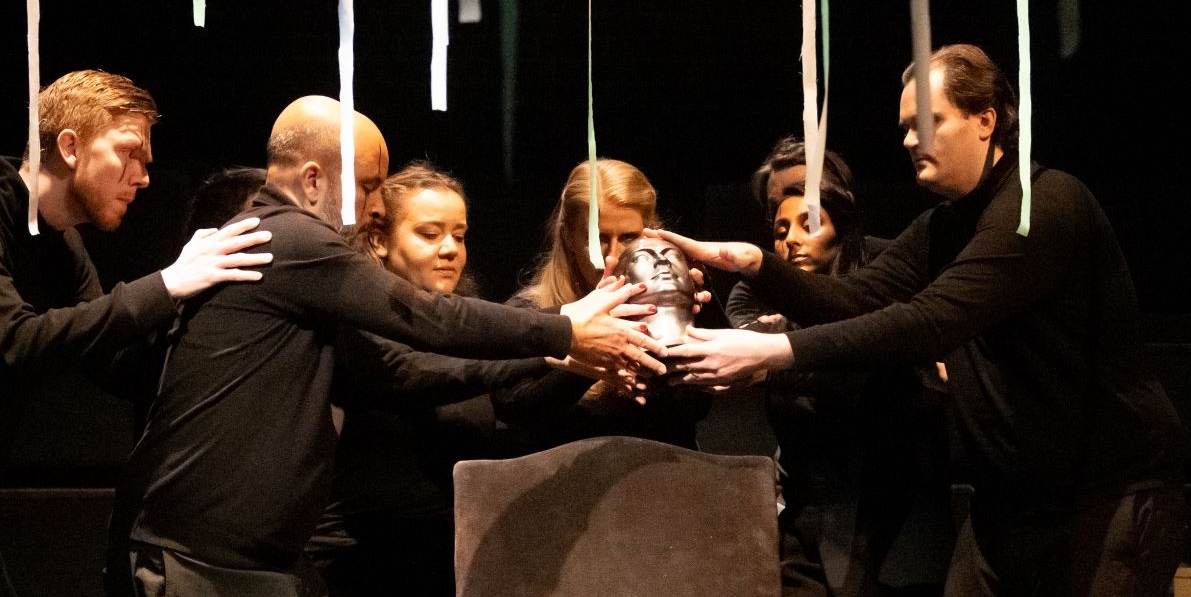Ensemble OrQuesta continue their original exploration of the repertory of Baroque opera with something of a coup – the premiere in this country of the one opera by Elizabeth Jacquet de la Guerre, a leading figure in the last decades of the reign of Louis XIV. In the usual learned programme note available on their website, Marcio da Silva, conductor and director of the production, gives us a fascinating introduction to this neglected harpsichordist and composer, who made important contributions to many musical genres after the death of Jean-Baptiste Lully, while demonstrating in her own highly successful career that there were real opportunities for women at the court of the Sun King and in the theatres and salon of Paris.
This production foregrounds a new edition of this work from 1694 that showcases an elaborate sequence of recitatives, plangent and emotionally restrained ‘airs de cours’, larger choruses and a gallery of instrumental interludes that cover every mood. The cast are accompanied by an excellent seven-piece orchestra of individual and collective panache, and Da Silva himself not only conducts and directs, but plays several instruments from the podium and takes a supporting role in the drama. It is a thoroughly engrossing and absorbing evening.
The main plot is very simple, though somewhat over-complicated by diversionary sub-plots and a standard prologue in praise of Louis XIV that might perhaps have been omitted for modern audiences. Procris and Céphale are lovers destined for one another, but in the customary manner of Greek mythology, are thwarted by the random actions of the Gods, in this case, by Aurora, who has developed a passion of her own for Céphale. Through a sequence of misfortunes Procris is assigned to another lover, Borée, before dying an accidental death even though by this stage Aurora has relented.
As this summary might suggest, much of the most powerful music is in a register of anguish and lament, and both Kieran White and Poppy Shotts, in the lead roles, excel in putting this across to the audience, with a depth and restrained dignity of emotion that is entirely keeping with this aesthetic where symbolism and allegory frame and structure extreme emotions in a way similar to the achievement of Poussin in narrative painting. There is also a disconcertingly modern aspect to the rawness of the writing for Aurora, whose inflicting of suffering stems from her own marginality and alienation, eloquently projected here by Helen May.
But it is also one of the great merits of this production that the emotional and visual palette is made as diverse as possible. There are genuine moments of comedy and satire too, elegant choreography to ensure that there is always some visual stimulus and variety to the action, and careful consideration of costume, with a basic black outfit for the majority of the characters varied with some intriguing use of crinolines. The minimalist design of the Cockpit Theatre assists the production here with the four entrances at the corners of the layout allowing for great flexibility in the setting and a seamless flow from one short scene into another.
A short review cannot do justice to all the singing roles, but beyond the excellent main leads there was lucid and compelling work from Anna-Luise Wagner as Dorine, a confidante of Procris; Jack Lawrence-Jones, in the powerful, if ungrateful, role of Borée; and Lydia Ward, a somewhat sceptical attendant of Aurora. The cast as a whole punched above their weight as the chorus, and there was a particularly characterful trio of demons who could have been devised by Matthew Bourne, even down to the red marigolds….
An elaborate web of symbolism was created throughout the piece, entirely in keeping with the way ancient mythology and contemporary court life were self-consciously interfused in this era. Not all of it was immediately accessible (for example the streamers hanging from the ceiling, torn down piecemeal by the cast as the action progressed remained opaque to this viewer). It is a work that doubtless repays more than one viewing. The translated surtitles were projected onto an uneven brick wall at the back of the theatre which made them very hard to read for most of the audience. In a very wordy opera this was unfortunate, though the clear French diction projected by a majority of the cast meant it was not hard to follow the action.
With a fine production of ‘Phaedra’ now opening at the National Theatre as well, this opera gives us a rare chance to savour the relatively unfamiliar, stylised but affecting world of the French Baroque at a high level of accomplishment. And this is also a very welcome re-introduction to the work of a significant female composer. May it return again soon!

